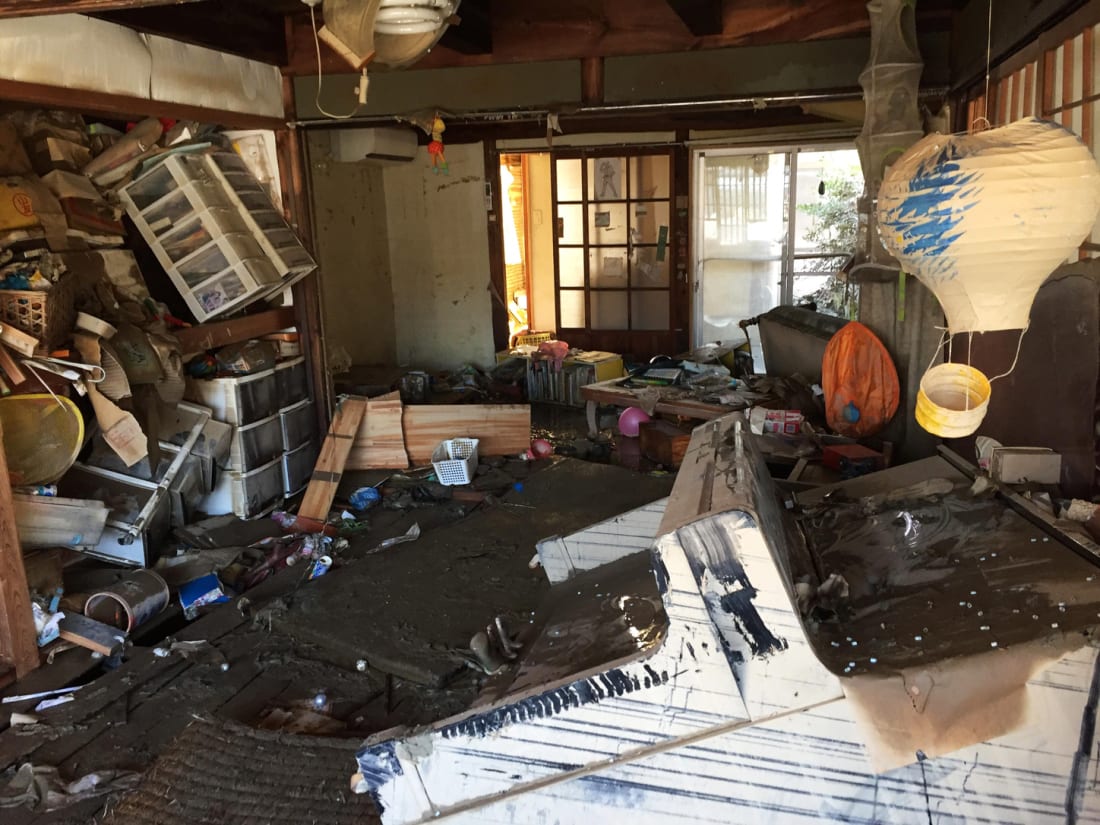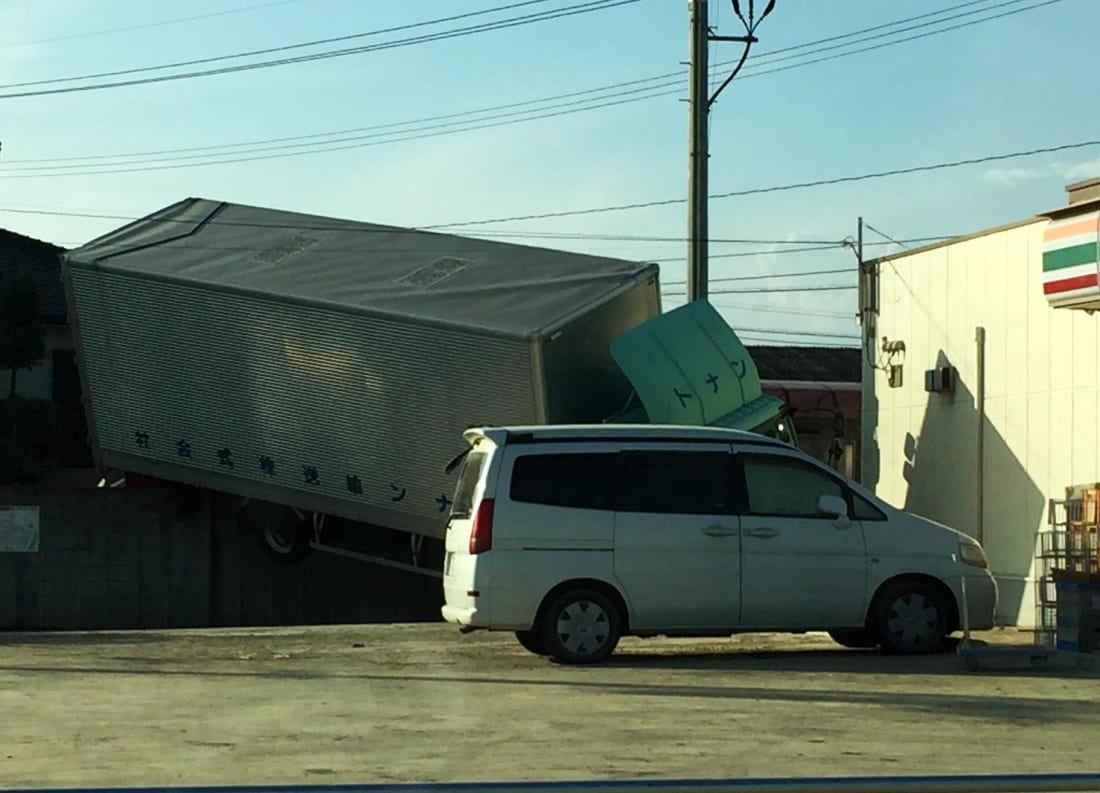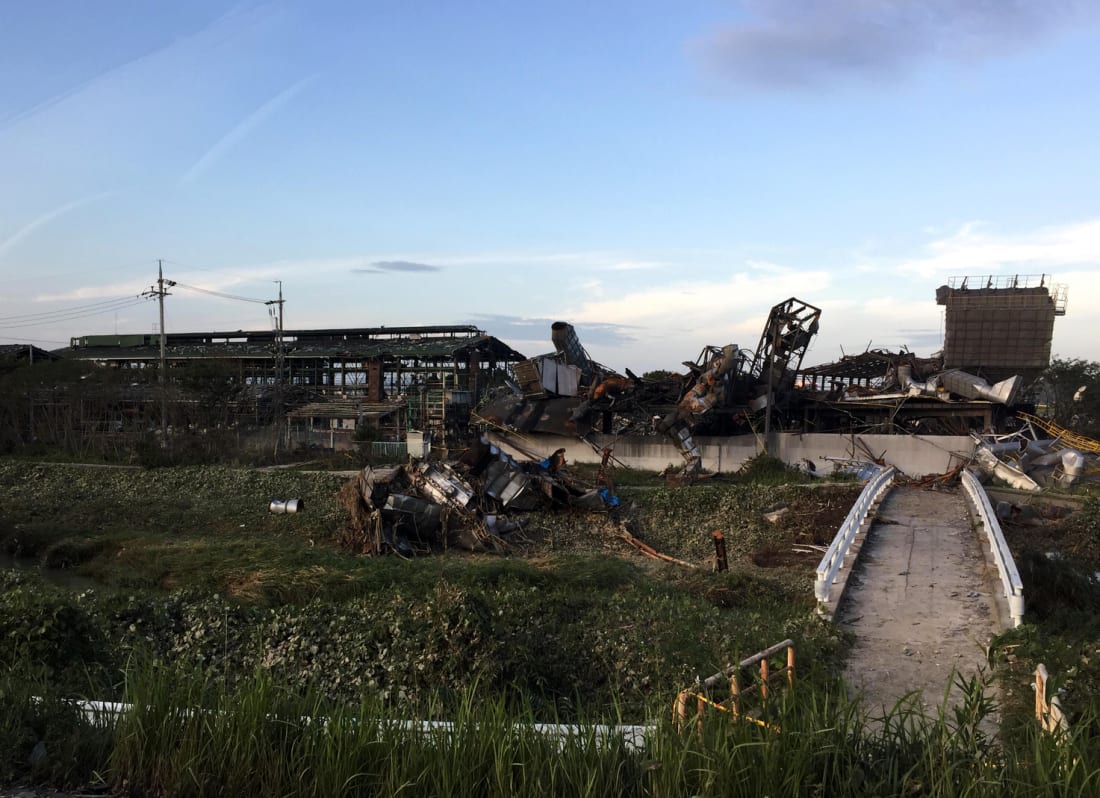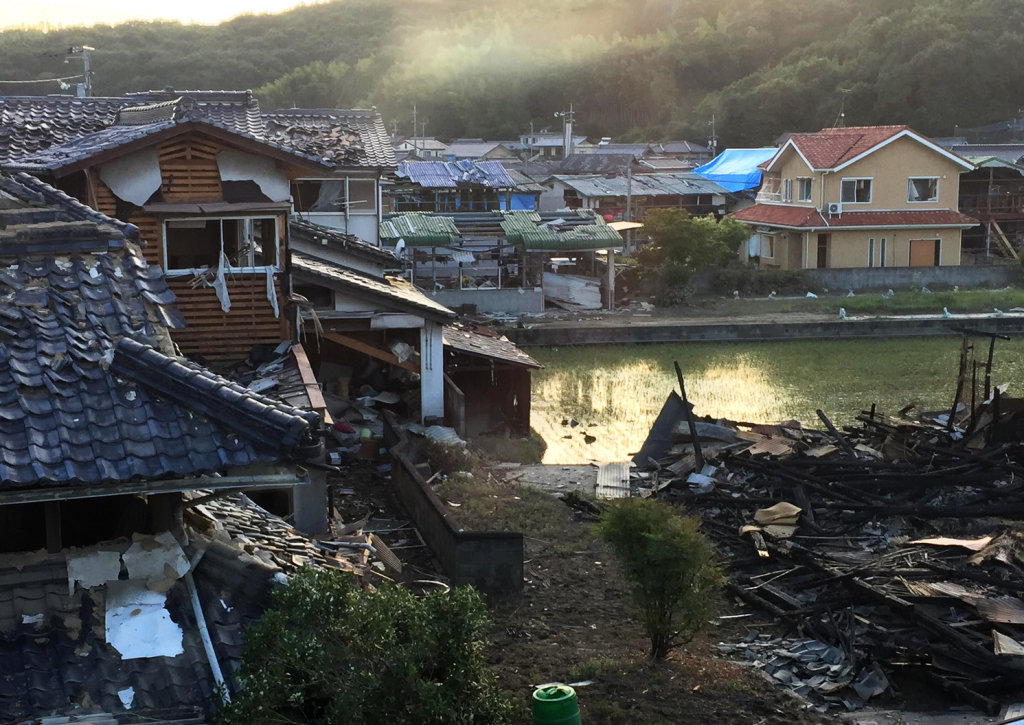Volunteers and government workers descended on the communities in southwestern Japan to help local residents recover from devastating floods and landslides caused by record-setting rainfall.
According to NHK World, officials have confirmed 162 deaths and 56 people remain missing, with the bulk of the destruction hitting Hiroshima and Okayama prefectures.

Volunteers Risking Health and Safety
The Japan Meteorological Agency continues to issue flood warnings for Kurashiki, a town of 500,000 residents in Okayama prefecture. Volunteers in Kurashiki worked in temperatures exceeding 33° Celsius to clean houses awash in mud and sewage.
Kurashiki resident Masahiko Kubota spent Tuesday cleaning the home of an elderly friend located in the disaster area on the west side of the Takahashi River. Kubota said because of traffic congestion and bridge closures, it took two hours to drive from one side of the river to the other. The roads were lined with discarded furniture and appliances. An aluminum factory located on the river’s edge was nothing but a skeletal frame.
“On the east and west sides of the Takahashi River, I felt the difference between heaven and hell,” says Kubota.
At least 100 people have died in Japan following floods and landslides across the the southwest of the country https://t.co/PUs27wK4tj pic.twitter.com/FoLwUq61j3
— CNN International (@cnni) July 9, 2018
Two Million Evacuated
Since Thursday unprecedented torrential rain struck eight prefectures forcing the evacuation of two million residents. Within two hours more than 36 centimeters (14 inches) of rain fell in the city of Uwajima, double the entire average monthly rainfall.
The Japan Meteorological Agency attributes the increase of these intense rains to global warming as rising sea levels make the area more susceptible to storms.
According to reports, the Japanese government mobilized 75,000 troops and emergency workers and nearly 80 helicopters for the search and rescue effort, as widespread images showed desperate residents clinging to their roofs. A government task force is in operation and ¥2 billion was earmarked to hasten deliveries of supplies and other support.
Prime Minister Shinzo Abe canceled an overseas trip to monitor the disaster-stricken areas.

Local Organizations Providing Help
For those looking to offer support, Operation Blessing Japan is delivering fresh drinking water to victims in emergency shelters. You can donate to their effort here.
Second Harvest Japan has begun providing food to organizations operating in the disaster area. Those wishing to volunteer can e-mail [email protected] (Emergency Relief English).
Voluntary Architects’ Network (VAN) and Shigeru Ban Architects is providing a paper partition system to shelter those who lost their homes, and are accepting donations to support relief efforts.
Words by Madeline Cash and Nick Narigon

Kurashiki city









